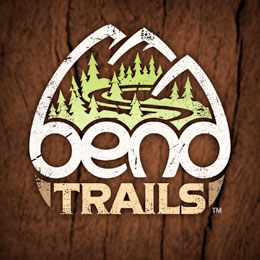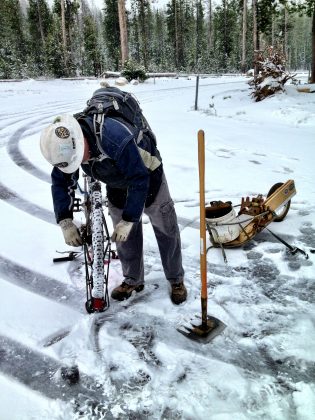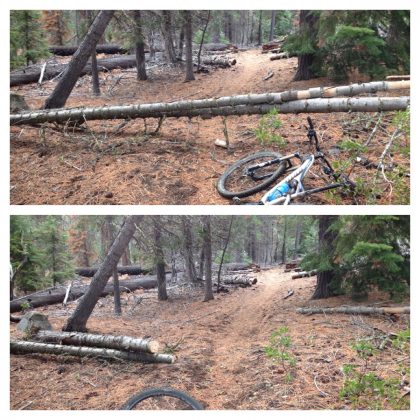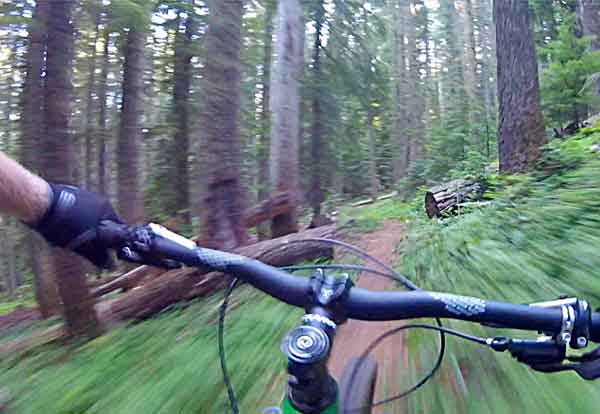I was recently in McCall Idaho riding a loop around Loon Lake (an IMBA Epic ride). The ride started out on miles of ATV road (listed as singetrack) that was a 6′ wide sandpit. It really had me questioning the EPIC-ness of this ride! The day previous I used the Adventure Map for the same region and rode to a trailhead which was also listed as Singletrack. It was an ATV corridor (6-8′ wide) with an unbelievably steep, sandy climb that I gave up on after a few miles. Grrrr!
Turns out most of the trails in the McCall area are open to both MTBs and motos (and probably horses and hikers). After some research I found out it’s the moto users who clear the trails each year – and the local mountain bikers consider this a good trade.
All this got me to thinking of how special Central Oregon is. We have hundreds of miles of singletrack (vastly more than McCall, Idaho) and these trails are cleared by mere mountain bikers.
Yes, we have more mountain bikers and a more active trail alliance than McCall Idado – so I can’t say the system we have here would work there. Either way – I think it’s a privilege to be able to legally clear trails by hand with nothing more than a MTB and a hand-saw.
Let’s look into how trails are cleared on our local trails.
There are a handful of certified sawyers (within COTA and elsewhere) who clear many trails each spring and throughout the year. Literally thousands of trees. Trails like Sector 16 and Edison Lava typically have hundreds of down trees each spring. Basically everything above the Phil’s area will have significant deadfall. These fine people do the work in their spare time with friends. COTA doesn’t typically organize trail clearing days (like Central Oregon Nordic Club), so you might have a hard time helping with one of these crews. The work is not advertised. Cota does now have a Sawyer e-mail list and if you are certified – please contact us or Cota to be added to the list.
Aside from Chainsaws – work is also done with handsaws by various trail users.
Note: Clearing deadfall can be quite dangerous. Recently the USFS has adopted some new standards and rules regarding hand saws. If you are clearing something smaller than 5″ – you are allowed to cut that tree as a non-certified person. If over 5″ you must be certified on chainsaw or handsaw (crosscut certification). For anything over 5″ you will need to wear all USFS approved PPE and you will be required to have a swamper with you for safety.
I often carry a handsaw in my pack early season and clear trees as I find them. My personal favorite hand saw is the Silky Bigboy (#ad). It’s a 14″ blade which will cut the majority of trees you will find blocking the trail, and it fits in your pack.
Some important things to note when clearing a tree from a trail:
- Does the tree need to be cleared? Sometimes a tree falls on a trail that was an old road conversion. Or on a trail that has a long straight section. Has the tree fallen in a way that adds to the flow of the trail? Has a go-around developed and the trail actually rides better than before? It sometimes happens!
- Leave your helmet and gloves on. Wear eye protection if you have it.
- Can you pick the tree up and rotate/move it off the trail? If so, move it several feet off the trail. Think about trail aesthetics. Don’t place the tree on the side of the trail like a guard rail.
- Make sure you look closely at how the tree has fallen. Only cut trees that won’t fall further after cutting. In other words – use common sense. If it looks iffy – don’t attempt to clear the tree.
- Don’t cut the tree along the very edge of the tread. Cut 2-3′ from the edge of the tread if the tree is laying on the ground. Sometimes this is not possible – but make your best effort. Also take into account the specific trail. Are you clearing a trail from Tiddlywinks where people are riding 20+ MPH and launching off massive gap jumps? Cut back 4-5 feet or even further for this type of trail.
- If the tree is lodged in a way that left it elevated, you will need to cut it back even further. Think about a rider going off trail and hitting this. Cut back as far as possible within reason. Look at the tree after you cut it. Does it look fairly natural? or do you have a tree still jutting up in the air 6′ (even if it is way off the side of the trail). Go ahead and cut this tree so it’s resting on the ground. It looks better and kids won’t be encouraged to climb it.
- Cut the branches off the dead tree near the trail all the way down to the base of the tree trunk. We don’t want a rider crashing into a pointy branch stub.
- Clear debris off of the trail – and toss some branches and pine needles on any go-around that has developed.
- Contact COTA afterwards so they can relay info to local sawyers.
- Post a comment on this site under the trail which you cleared. Trail reports are gold!
Good technique on these hand saws is also important. Your instinct will be to push and pull as you cut. Most of these hand saws are designed for only pulling and minimal pushing. As you can see in the photo above – I broke the tip off my saw (bad technique). Replacement blades can be purchased through Silky.
Here is a before/after photo of trees which were cleared off Tumalo Ridge. Funny to see the leaning tree on the left. It’s probably down by now!
Since writing this Blog post – I (Joe) got my chainsaw certification. I have been actively sawing with a chainsaw since 2016 or so. I can now teach and train people for various trail groups and I evaluate new sawyers throughout the state. Lev at Cog also teaches and evaluates sawyers.
Happy riding!











Any tips on preventing blade pinches?